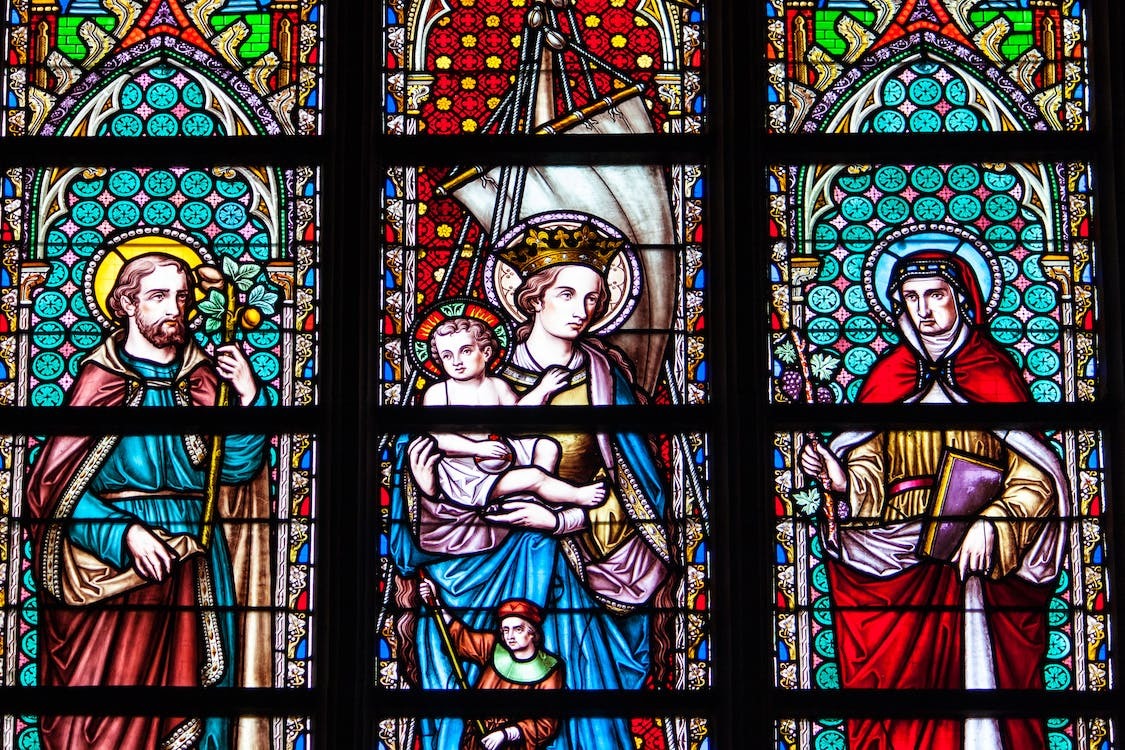Determining the age of medieval stained glass is both an art and a science. For collectors, historians, and restoration specialists, accurately dating a piece is crucial for understanding its historical significance, verifying authenticity, and assessing value. Because Medieval stained glass was produced over several centuries, from the 10th to the 16th century, subtle differences in style, materials, and craftsmanship can reveal when—and sometimes where—it was made.
Why Dating Medieval Stained Glass Matters
Knowing the precise age of medieval stained glass enhances its historical importance, informs restoration strategies, and increases its market value. A panel from the 12th century, for example, will be far rarer and more valuable than one from the late 15th century. Accurate dating also helps connect the glass to specific architectural movements, patrons, or historical events.
Key Indicators of Age
Experts rely on a combination of visual analysis, scientific testing, and historical research to date medieval stained glass.
Style and Iconography
Artistic styles evolved over the centuries. Early medieval stained glass often features bold, simple figures with limited perspective, while later Gothic examples display more intricate details, flowing drapery, and complex compositions.
Glass Color and Composition
The color palette can be a clue. In the 12th and 13th centuries, deep blues and ruby reds were prevalent, achieved with cobalt and gold chloride. Later centuries saw an increase in lighter tones, including pinks and pale greens, as techniques advanced.
Lead Came Profiles
The lead cames (strips holding the glass pieces together) can indicate age. Older panels often have thicker, more irregular cames due to medieval casting techniques, while later examples show more uniform profiles.
Scientific Methods for Dating
While visual inspection is valuable, scientific testing provides more precise results.
- X-ray Fluorescence (XRF) – Analyzes the elemental composition of the glass, revealing information about the materials and manufacturing techniques used in different periods.
- Radiocarbon Dating of Organic Materials – If the panel contains organic binding materials, these can sometimes be dated.
- Microscopic Examination – Identifies weathering patterns, tool marks, and paint layer structures consistent with certain time periods.
Provenance Research
Historical documentation is an essential part of dating medieval stained glass. Records of church construction, donor inscriptions, or archival photographs can provide concrete evidence of origin and age. Many pieces have been relocated over time, so tracing their movement helps confirm their historical timeline.
Challenges in Dating Medieval Stained Glass
Dating medieval stained glass is not always straightforward. Restoration work over the centuries often involved replacing damaged sections with glass from different eras, making it harder to determine the original age. Some panels are composites, containing pieces from multiple time periods.
Working with Experts
Because of the complexity of dating medieval stained glass, it is wise to consult experienced conservators, art historians, and stained glass specialists. They can combine stylistic analysis with scientific testing to produce the most accurate results.
Conclusion
Identifying the age of medieval stained glass requires a careful blend of art historical knowledge, scientific analysis, and documentary research. By examining style, color, leadwork, and provenance, experts can uncover the story behind each panel and place it within the broader history of medieval craftsmanship. Accurate dating not only increases the value of medieval stained glass but also deepens our appreciation for these luminous windows into the past.



